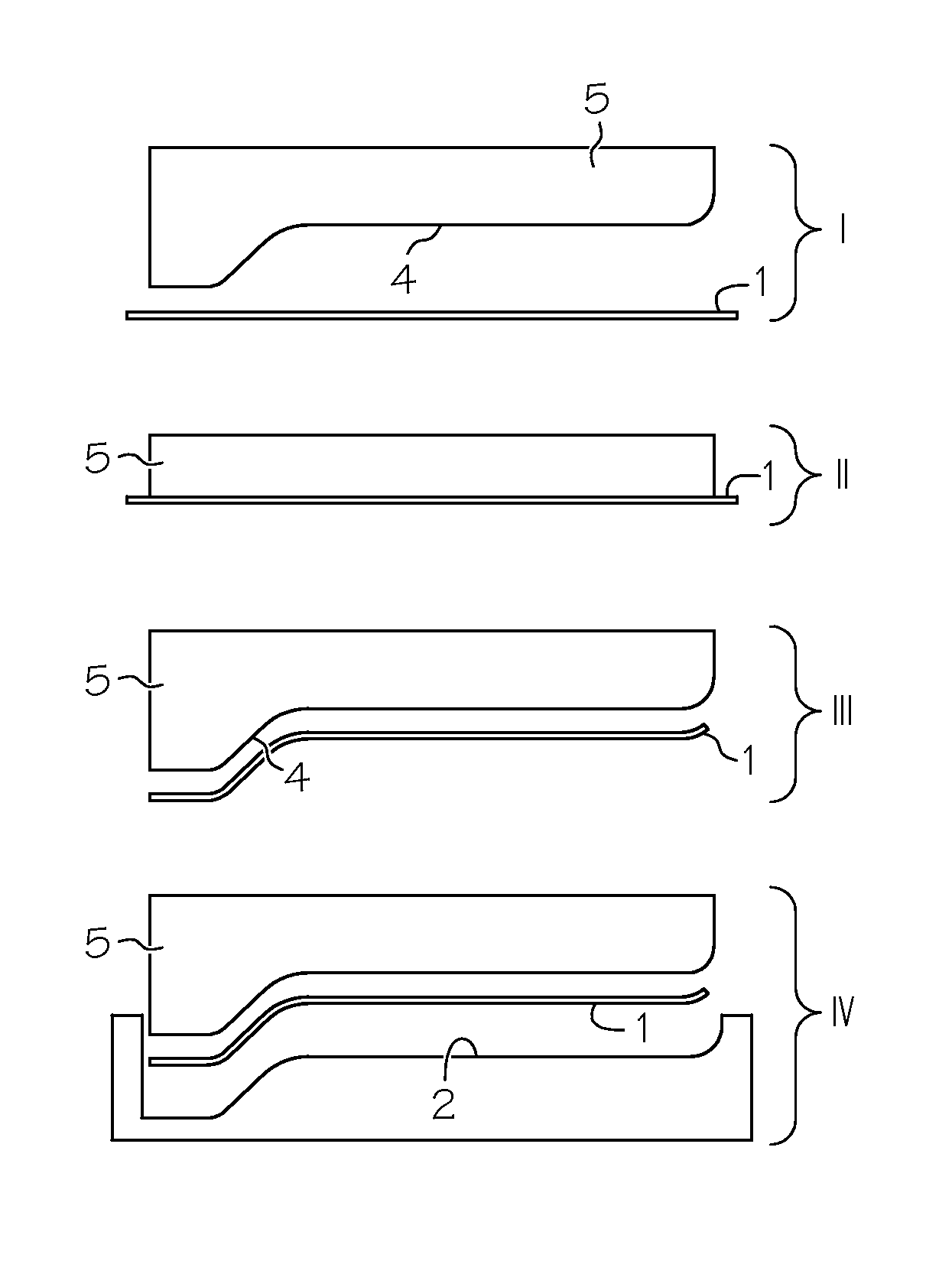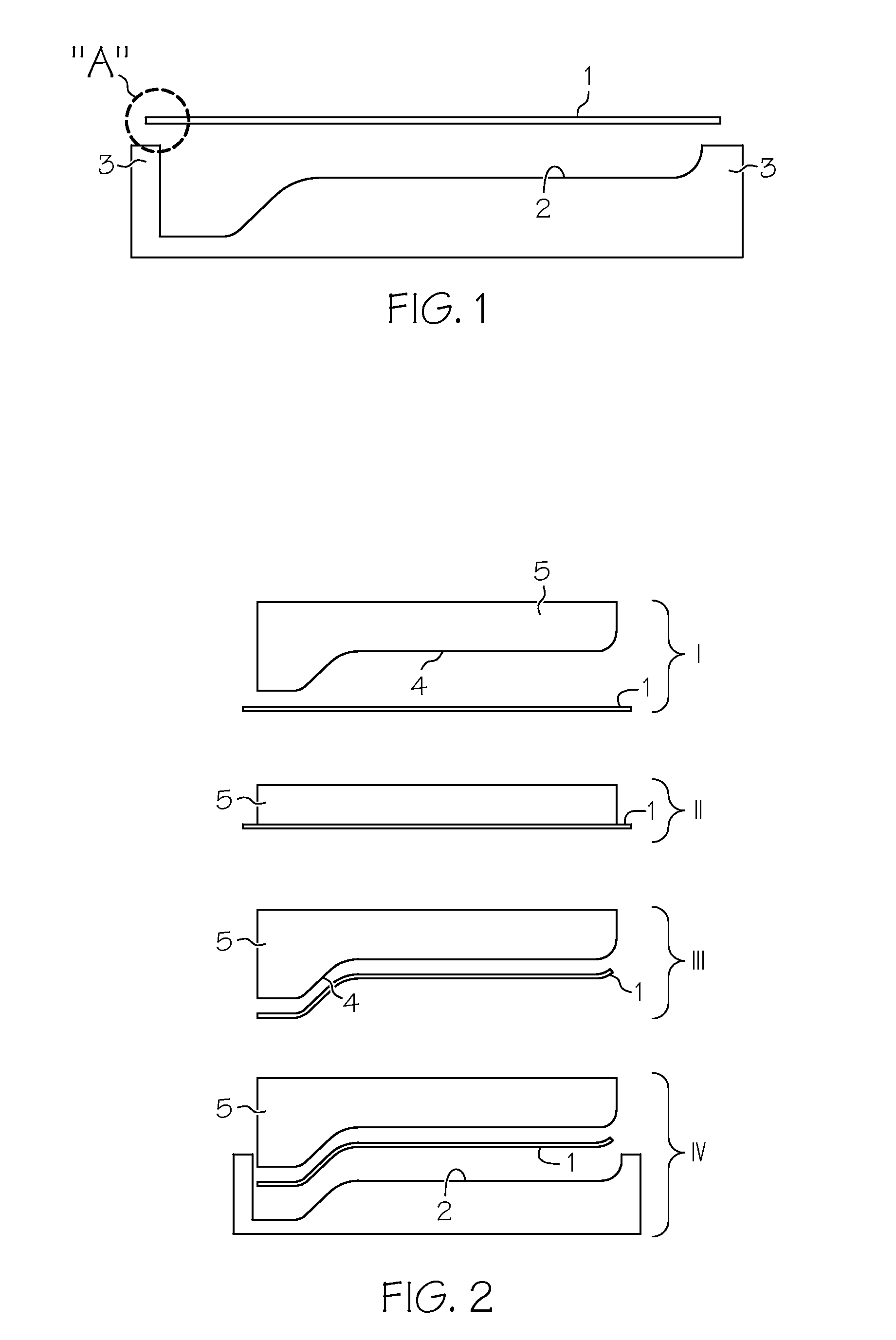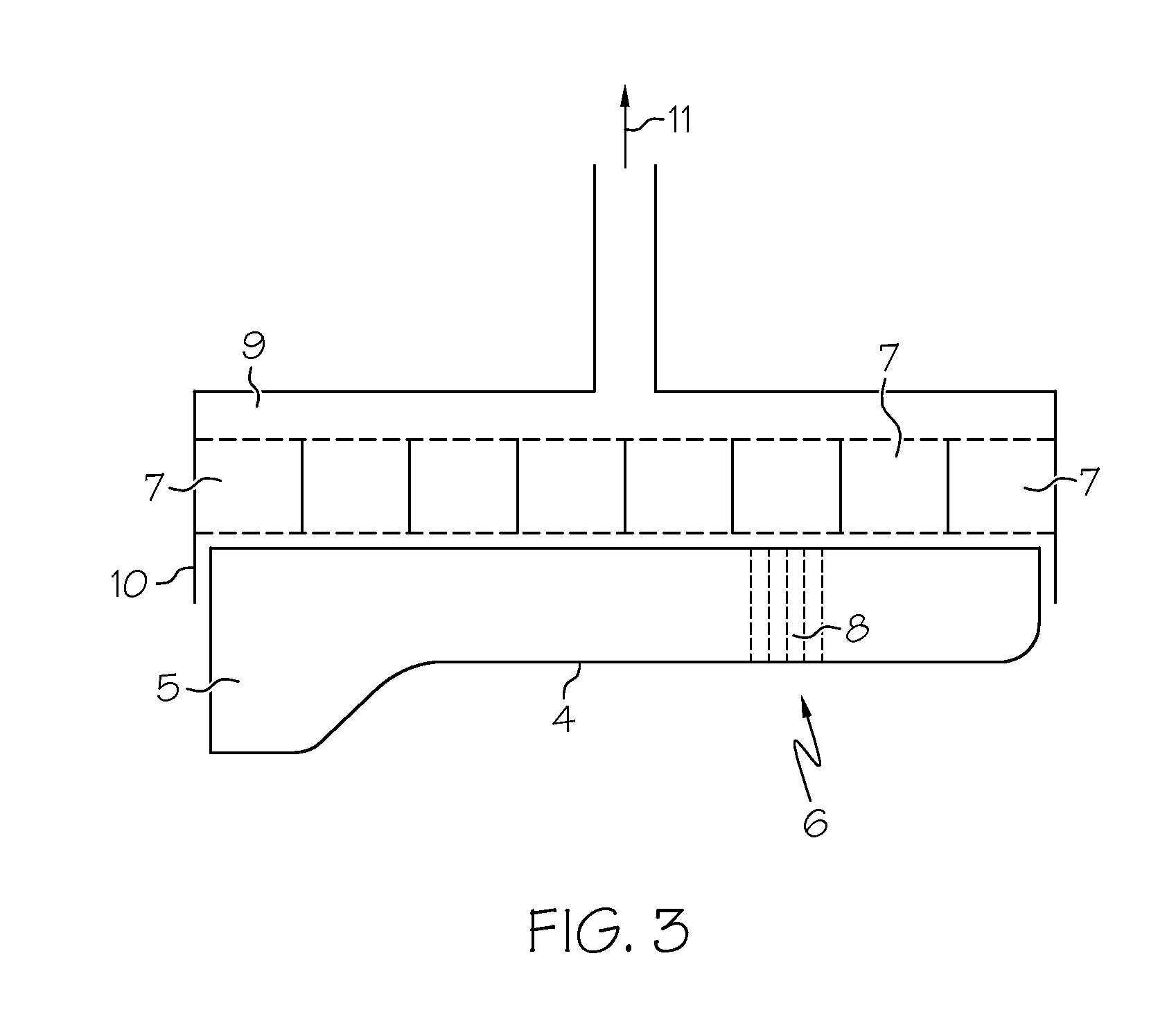Method and device for placing thin material layers onto a relief mould
a relief mould and material layer technology, applied in the field of layered materials, can solve the problems of large technical implementation expenditure, enormous cost, and inability to return anywhere near satisfactory, and the material layer that is to be placed into the relief mould does not fit in the tool mould
- Summary
- Abstract
- Description
- Claims
- Application Information
AI Technical Summary
Benefits of technology
Problems solved by technology
Method used
Image
Examples
Embodiment Construction
[0026]Below, with reference to FIG. 1, the problem is explained that can be encountered when placing a material layer in a relief mould. FIG. 1 shows a relief mould 2 that is laterally delimited by two sidewalls 3. Since the surface of the relief mould 2 comprises a height gap, the material layer 1 that is to be deposited to the relief mould 2 must be of a length that corresponds to the unwinding of the relief mould 2. This makes it necessary for the length of the material layer 1 to be longer than the clearance between the two sidewalls 3, which is why the material layer 1, as indicated in FIG. 1 by the region “A”, overlaps the left sidewall 3 so that in this way it cannot be placed flat onto the relief mould 2.
[0027]In order to solve this problem, as well as solving the additional problems, as mentioned above, encountered during the placement of a material layer 1 in a relief mould 2, the present invention therefore proposes two differently designed methods, of which a first metho...
PUM
| Property | Measurement | Unit |
|---|---|---|
| pressure force | aaaaa | aaaaa |
| retention force | aaaaa | aaaaa |
| surface relief | aaaaa | aaaaa |
Abstract
Description
Claims
Application Information
 Login to View More
Login to View More - R&D
- Intellectual Property
- Life Sciences
- Materials
- Tech Scout
- Unparalleled Data Quality
- Higher Quality Content
- 60% Fewer Hallucinations
Browse by: Latest US Patents, China's latest patents, Technical Efficacy Thesaurus, Application Domain, Technology Topic, Popular Technical Reports.
© 2025 PatSnap. All rights reserved.Legal|Privacy policy|Modern Slavery Act Transparency Statement|Sitemap|About US| Contact US: help@patsnap.com



